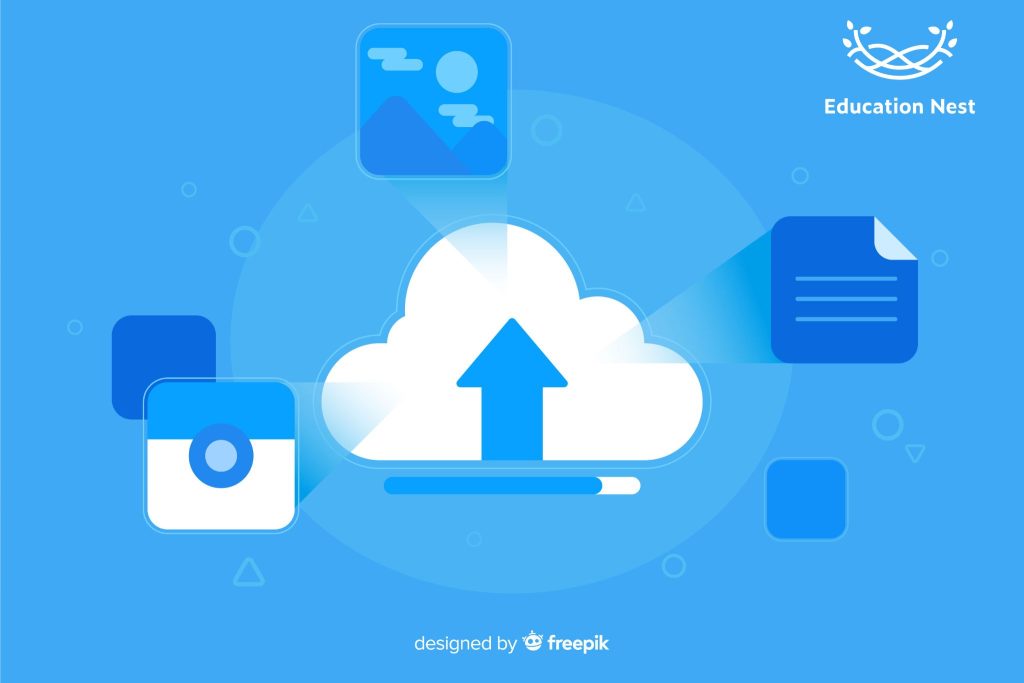
Applications today have to be very responsive and always available online. Instances of these applications need to be put in data centers close to their users to get low latency and high availability. As a fully managed service, Azure Cosmos DB takes care of managing, updating, and patching your database without you having to do anything
Azure Cosmos DB offers flexible pricing options based on usage, performance requirements, and geographic locations.
What does Azure Cosmos DB mean?
Azure Cosmos DB is a service for databases that is used all over the world. It lets you take care of your data even if you store it in data centers all over the world. It gives you the tools you need to scale your global distribution pattern and your computational resources. Microsoft Azure is the source of these tools.
Microsoft’s Azure Cosmos DB is an example of a platform as a service (PaaS).
Azure Cosmos DB is a NoSQL database from Microsoft that is very good.
- It is used a lot because it is easy to get, always works, has a high throughput, etc.
- It can use one backend to support multiple data models. This means it can be used for document, key-value, relational, and graph models.
Is Azure SQL DB a PaaS or a SaaS service?
Azure SQL Database is a fully managed platform as a service (PaaS) database engine that takes care of most database management tasks like upgrading, patching, backups, and monitoring without the user having to do anything.
Azure Cosmos DB for PostgreSQL is a distributed SQL service that is fully managed and lets you build modern cloud-native apps at any scale. The core of the service is open-source PostgreSQL, and the Citus extension helps to scale workloads horizontally.
This works with the existing NoSQL APIs in Azure Cosmos DB to provide a common data foundation for a wide range of applications, such as multi-tenant SaaS, Internet of Things (IoT), and online transaction processing (OLTP) apps.

The following are a few common Cosmos DB use cases:
- IoT: The use cases for IoT have to deal with large amounts of data from different parts of the world. This information needs to be written down, looked at, and found quickly. In this case, the same thing can be done with Cosmos DB.
- Retail and Marketing: With Cosmos DB, it’s easy to add, change, and get huge amounts of data about product catalogs, logistics, inventory, and other things.
- Popular games like The Walking Dead: No Man’s Land by Next Games and Halo 5: Guardians use Azure Cosmos DB to provide in-game stats, scoreboards, social media integration, and more with low latency.
- Web and mobile apps: It can be used in web and mobile apps to model social interactions, integrate with third-party services, and build rich, personalized experiences.
Azure Cosmos DB vs. MongoDB: Where do they differ?
“A fully managed, globally distributed NoSQL database service,” is how developers describe Azure Cosmos DB. Azure DocumentDB is a fully managed NoSQL database service built for fast and predictable performance, high availability, elastic scaling, global distribution, and easy development. On the other hand, “The database for giant ideas” is what MongoDB is called. MongoDB stores data in documents that look like JSON but can have different structures. This is called a dynamic, flexible schema. MongoDB was also made to be highly available and scalable, with replication and auto-sharding already built in.
Azure Cosmos DB and MongoDB are mainly known as “NoSQL Database as a Service” and “Databases” tools, respectively.
“Best-of-breed NoSQL features” are the main reason why more than 13 developers like Azure Cosmos DB. “Document-oriented storage” is the main reason why more than 788 developers like MongoDB.
MongoDB is an open- source tool with 16,200 stars and 4,0800 forks on GitHub. Here is a link to GitHub, where the open-source repository for MongoDB is kept.
Some of the most well-known companies that use MongoDB are Lyft, MIT, and Bodybuilding.com. On the other hand, Microsoft, Rumble, and Property With Potential all use Azure Cosmos DB. MongoDB is more popular than Azure Cosmos DB. It is mentioned in 2175 company stacks and 2143 developer stacks, while Azure Cosmos DB is only mentioned in 24 company stacks and 23 developer stacks.
Also Read:
AWS/GCP/Azure: How to Choose the Best
Azure CosmosDB vs. Azure SQL Database
| Azure SQL Database | Azure Cosmos DB | |
| Features | SQL data sets, SQL monitored occurrences, and SQL virtual machines are just some of the SQL sending options available for various types of tasks. | conveys instantaneous flexibility and reaction times in the millisecond range. |
| Storage size | Data set size of 100 TB in SQL8 TB of SQL oversaw the occasion.256 TB for the SQL virtual machine | infinite storage for each individual data set and folder. |
| Backups | With a long-term reinforcement maintenance strategy, backup copies of data sets may be stored in Azure Blob storage for as long as ten years. | Users can retrieve lost data by contacting support, and the mode for sporadic reinforcement is by default enabled; reinforcement happens at irregular intervals.Continuous data protection allows you to restore your files to any point in the past 30 days. |
| Encryption | Strongly supports both server- and client-side encryption that is supervised by Microsoft.Promotes the use of TDE for secure server data storage.Azure SQL Database is compatible with Azure Key Vault RSA 2048-bit client oversaw keys. | Microsoft safeguards the encryption keys used by Cosmos Database to keep your data secure. Client-managed keys (CMKs) allow you to use your own encryption keys. |
Conclusion
In this blog, we have covered the fundamentals of azure cosmos db, including what it is and how it differs from other databases like mongodb and azure sql database,
Data can be stored all over the world with Cosmos DB. This lets databases be close to customers, which will cut down on latency. Cosmos DB’s different features also make it easier to index, scale, and offer high availability.

